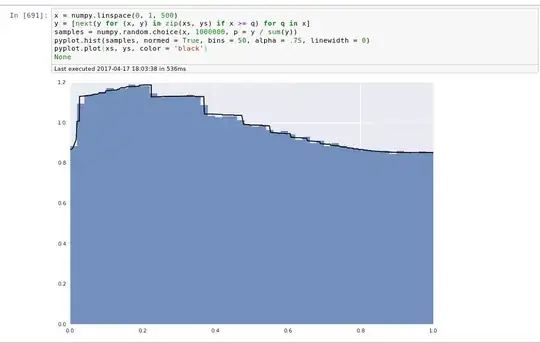I wrote a solution for drawing random samples from a custom continuous distribution.
You just need the funtion random_custDist and the line samples=random_custDist(x0,x1,custDist=custDist,size=1000)
import numpy as np
#funtion
def random_custDist(x0,x1,custDist,size=None, nControl=10**6):
#genearte a list of size random samples, obeying the distribution custDist
#suggests random samples between x0 and x1 and accepts the suggestion with probability custDist(x)
#custDist noes not need to be normalized. Add this condition to increase performance.
#Best performance for max_{x in [x0,x1]} custDist(x) = 1
samples=[]
nLoop=0
while len(samples)<size and nLoop<nControl:
x=np.random.uniform(low=x0,high=x1)
prop=custDist(x)
assert prop>=0 and prop<=1
if np.random.uniform(low=0,high=1) <=prop:
samples += [x]
nLoop+=1
return samples
#call
x0=2007
x1=2019
def custDist(x):
if x<2010:
return .3
else:
return (np.exp(x-2008)-1)/(np.exp(2019-2007)-1)
samples=random_custDist(x0,x1,custDist=custDist,size=1000)
print(samples)
#plot
import matplotlib.pyplot as plt
#hist
bins=np.linspace(x0,x1,int(x1-x0+1))
hist=np.histogram(samples, bins )[0]
hist=hist/np.sum(hist)
plt.bar( (bins[:-1]+bins[1:])/2, hist, width=.96, label='sample distribution')
#dist
grid=np.linspace(x0,x1,100)
discCustDist=np.array([custDist(x) for x in grid]) #distrete version
discCustDist*=1/(grid[1]-grid[0])/np.sum(discCustDist)
plt.plot(grid,discCustDist,label='custom distribustion (custDist)', color='C1', linewidth=4)
#decoration
plt.legend(loc=3,bbox_to_anchor=(1,0))
plt.show()

The performance of this solution is improvable for sure, but I prefer readability.


